
Destination
11:25, 09-Feb-2019
A temple to harmony and peace
CGTN
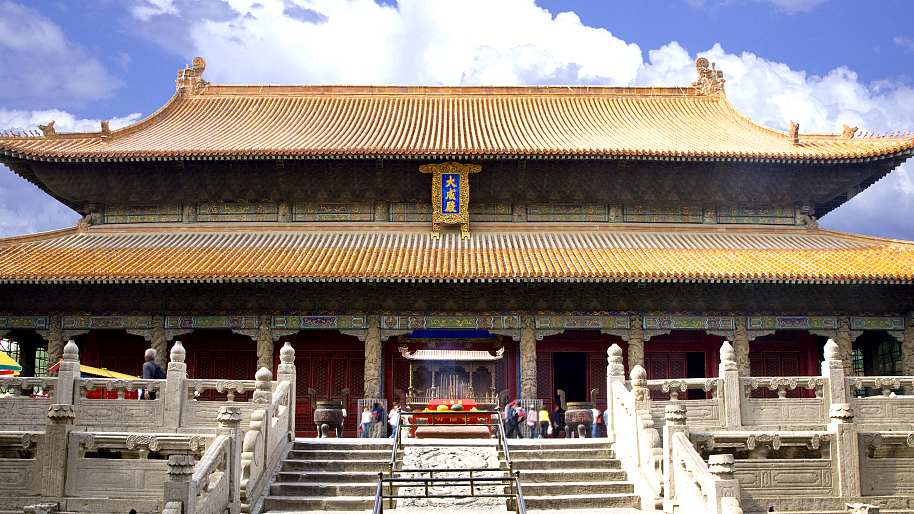
Seen from a distance, the Temple of Confucius in Qufu, Shandong Province, encircled by a magnificent red wall capped by glazed tiles and with delicate turrets at the four corners, looks somewhat like the Palace Museum (Forbidden City) in Beijing, which was the seat of the Ming (1368-1644) and Qing (1644-1911) dynasties' emperors.
The Temple of Confucius showcases the importance and uniqueness of architecture in times when the style of imperial palaces was not to be replicated by any other building, meaning the Temple of Confucius was the only complex allowed to employ the royal construction style.
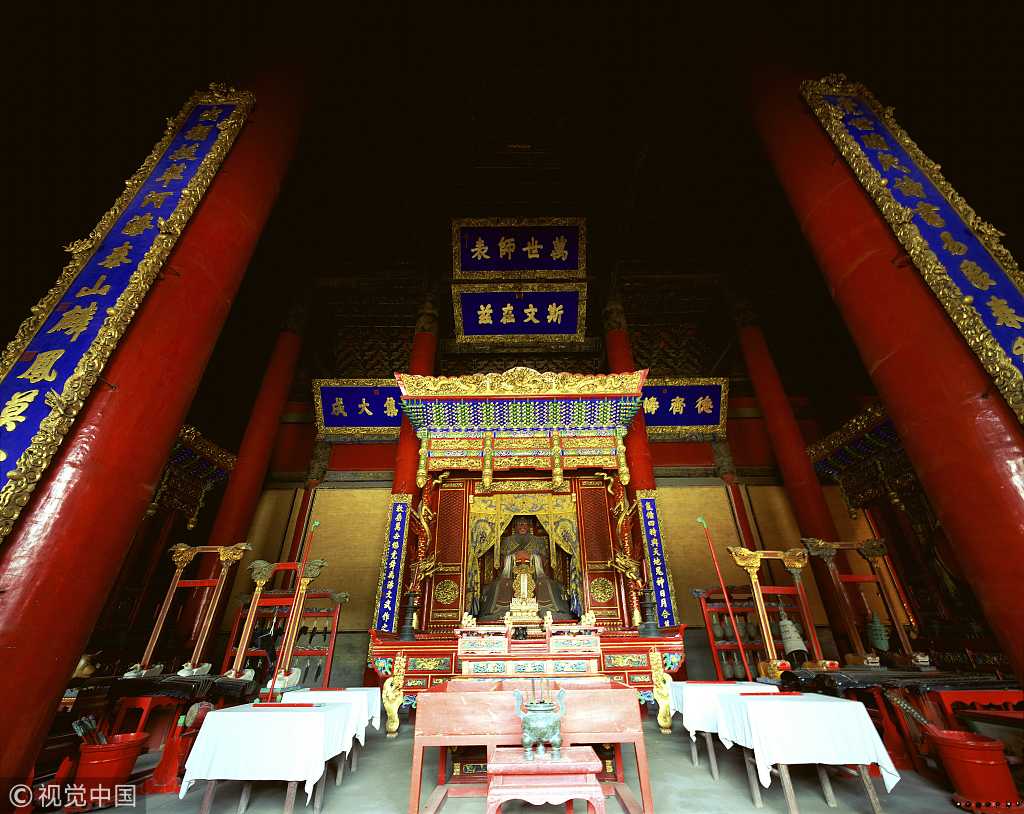
Dacheng Hall of the Temple of Confucius in Qufu, Shandong Province. /VCG Photo
Dacheng Hall of the Temple of Confucius in Qufu, Shandong Province. /VCG Photo
The main hall of the temple, known as Dacheng, which is basically a wooden structure 32 meters high, 54 meters long and 34 meters wide perched on a 2.1-meter-high white marble plinth, is one of the three largest halls built like an imperial palace hall similar to the Forbidden City's Taihe Hall and Tiankuang Hall of Daimiao Temple in Tai'an, a city about 100 kilometers north of Qufu in Shandong.
The Temple of Confucius is a tribute to Confucius (551-479 B.C.)-the greatest Chinese philosopher and founder of Confucianism.
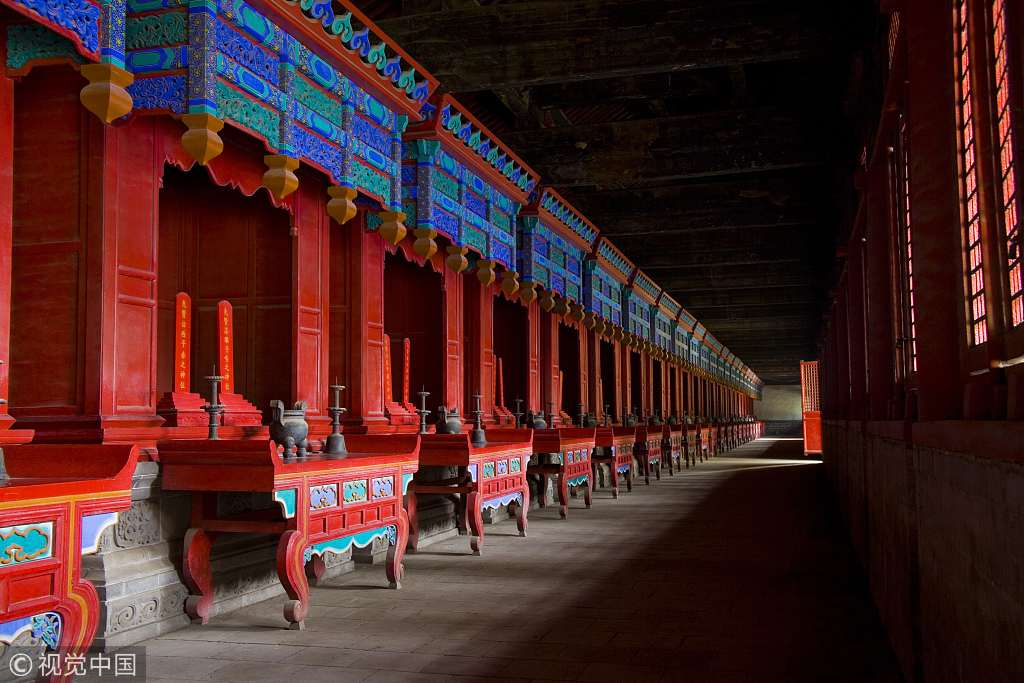
Temple of Confucius in Qufu, Shandong Province. /VCG Photo
Temple of Confucius in Qufu, Shandong Province. /VCG Photo
The temple was built in 478 B.C. during the Lu Kingdom (1043-249 B.C.) in Qufu, where Confucius was born and spent most of his life. The emperors of many dynasties bestowed on Confucius posthumous titles, and the temple was expanded and renovated by almost all the imperial dynasties since then, making it the largest temple in China where Confucius is worshipped.
The ceremony of worshipping Confucius on his birthday, now an intangible cultural heritage highlighted by its intricate rituals, has evolved into a grand cultural event, drawing the attention of people at home and abroad owing to the influence of Confucianism, and the government is intent on making it a platform to unite Chinese people around the world.
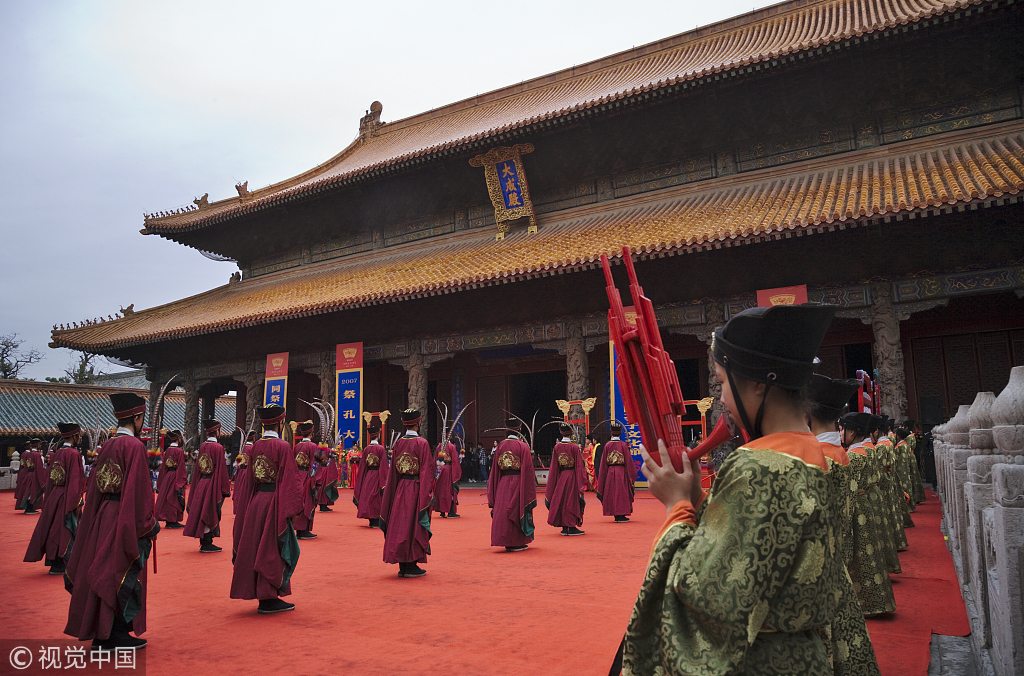
A ceremony to worship Confucius' birthday in the Temple of Confucius in Qufu. /VCG Photo
A ceremony to worship Confucius' birthday in the Temple of Confucius in Qufu. /VCG Photo
The layout of the complex was designed according to a series of ethical and ritual theories created by Confucius, who emphasized social hierarchy and harmonious co-existence of human beings and nature, making it a combination of space and spirit, and nature and culture.
There are hundreds of old trees and over 2,000 stone tablets in the temple complex, with the oldest one dating back to the Han Dynasty (202 B.C.-AD 220), which enshrines the imperial praise for Confucius. A number of tablets are valuable cultural relics, and important to history and calligraphy students.
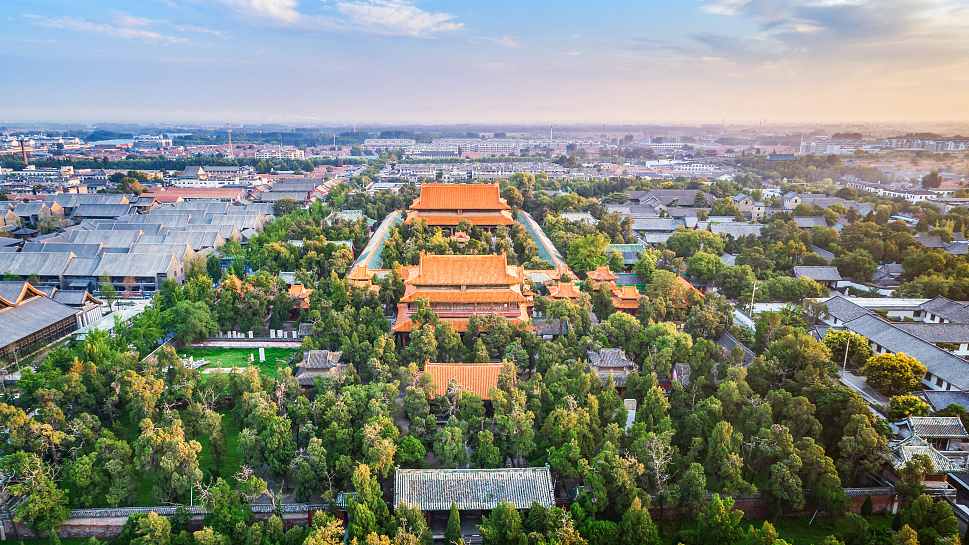
The Temple of Confucius in Qufu. /VCG Photo
The Temple of Confucius in Qufu. /VCG Photo
The Temple of Confucius, and the neighboring Kong's Mansion and Cemetery of Confucius were recognized as world cultural heritage by the UNESCO in 1994. The Chinese government put the three places as major cultural relic sites under State protection in 1961.
(Cover: Dacheng Hall of the Temple of Confucius in Qufu, Shandong Province. /VCG Photo)
Source(s): China Daily

SITEMAP
Copyright © 2018 CGTN. Beijing ICP prepared NO.16065310-3
Copyright © 2018 CGTN. Beijing ICP prepared NO.16065310-3